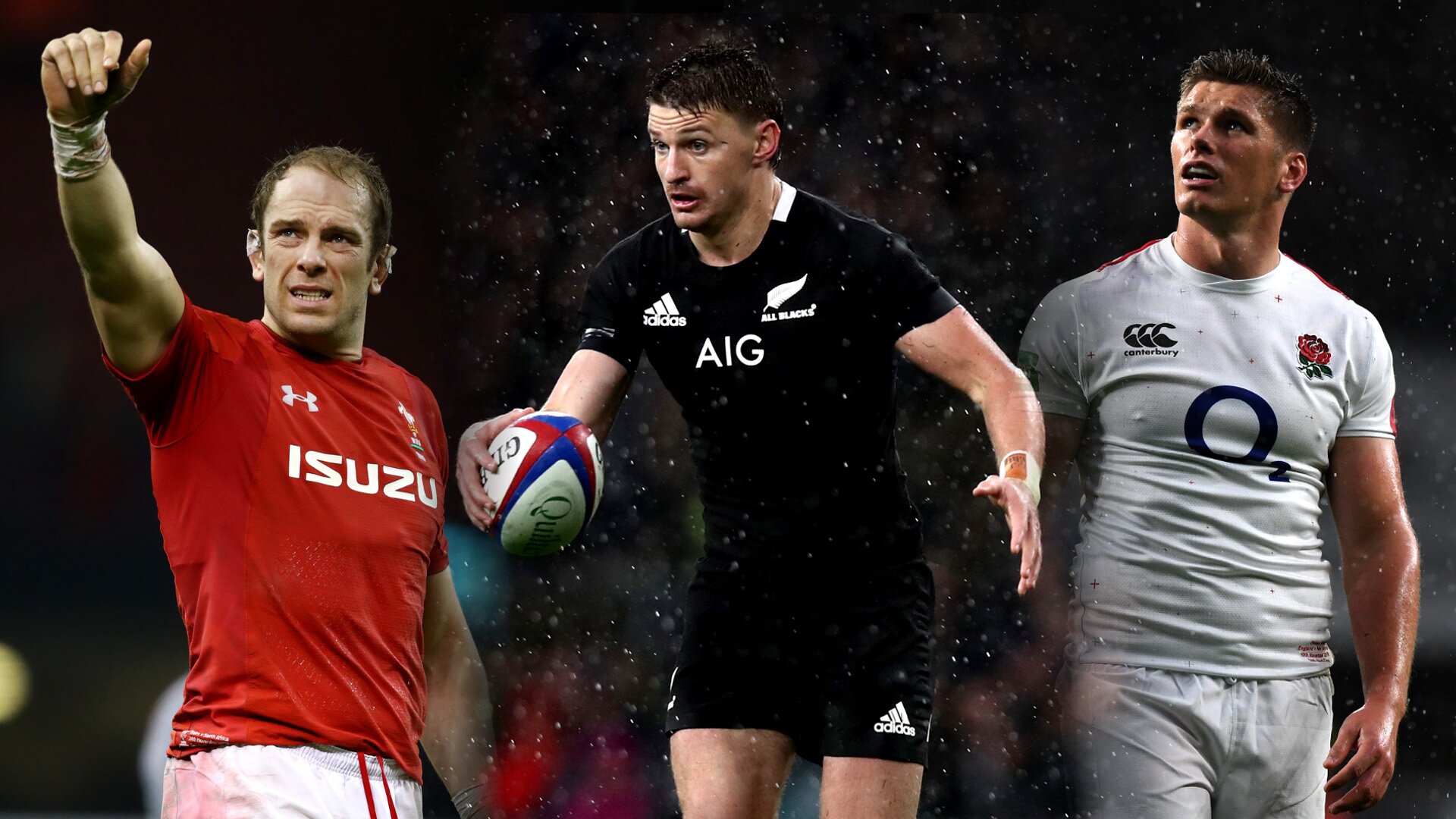With 2019 now just a few short days away, it signals the end of a memorable year of rugby. As is now tradition, Alex Shaw gives us his Top 30 players of 2018.
Ireland took the scalp of New Zealand and announced their genuine claim on the Rugby World Cup next year, Wales and England are enjoying comebacks after minor blips, South Africa are back on the international radar and Australia are, well, still struggling.
With the Six Nations, southern hemisphere tours, Rugby Championship and European tours all in the books, not to mention a year full of domestic club rugby done and dusted, we have compiled our top 30 players of 2018. There has been a fair amount of change since we did the same last year.
Let us know what you think and who would have made your top 30s instead.
(* denotes RugbyPass Index score)
- Jonny May, Leicester Tigers and England (75)
The speedster has transformed himself from a player with attacking talent and someone who can step up if England have injuries, into arguably England’s first-choice wing and as well-rounded a player as you could hope to find in the 11 or 14 jersey. His work rate, particularly chasing and competing for kicks, has been exemplary in 2018 and it’s that kind of contribution that has the players around him look better, too.
- Huw Jones, Glasgow Warriors and Scotland (82)
A classy operator, Jones turned in his second excellent Six Nations in a row earlier this year, then consolidated that with a strong showing in the autumn internationals. He ticks all the boxes for an outside centre, with a diverse attacking game that keeps defences guessing and mobility and decision-making that allow him, in turn, to defend well in a position that is extremely demanding.
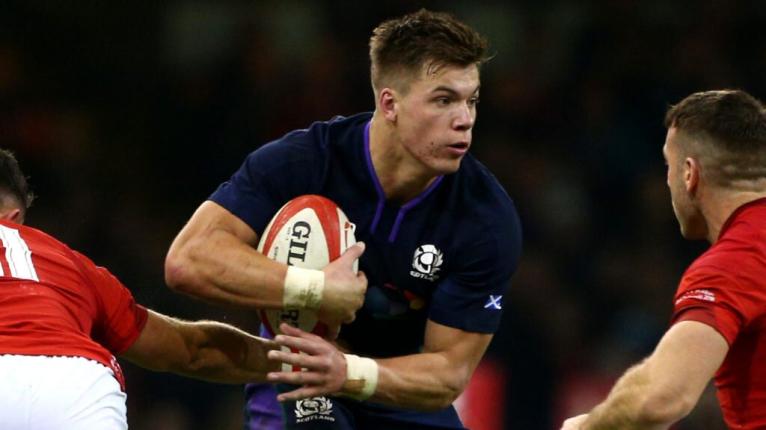
- Alun Wyn Jones, Ospreys and Wales (83)
The veteran lock continues to ooze class, leadership and game-changing ability, with no signs that father time is catching him up. The Ospreys’ inconsistent form doesn’t always help Jones to garner the plaudits his play deserves, but his contribution to Wales’ resurgence this year has not gone unnoticed. Entrance to World Rugby’s Hall of Fame is now just a matter of time for the 129-cap forward.
- Israel Folau, Waratahs and Australia (86)
Folau has been making the headlines for all the wrong reasons in 2018, but if you park that for a second, his rugby has continued to excel. He has a vertical ability that allows him to compete for and own contested aerial balls in a way no other full-back can, whilst his eye for a gap on the counter-attack is as good as anyone’s. Once he makes his break, defending teams just have to pray their scramble defence is on point.
- Emiliano Boffelli, Jaguares and Argentina (79)
When Santiago Cordero left the Jaguares for the Exeter Chiefs, there was concern about what his exclusion from the Argentinean national side would mean for the group moving forward. As good as Cordero is, there needn’t have been, such is the job that Boffelli has done in his absence. The versatile back three player can cover full-back and wing and has a boot on him that can see him nail penalties from well beyond 50m. He was sensational in Super Rugby this year and took that form into the international arena, despite the Pumas struggling in general.
- Jonny Gray, Glasgow Warriors and Scotland (88)
It’s not that Gray does any one thing better than anyone else, it’s that he does everything well above average and then demonstrates that week after week, with no drop in form. His work rate is excellent, and he puts his body on the line constantly for his team whilst also showing remarkable durability. At 24 years of age, he is already one of Scotland’s most trusted and relied upon players.
- Leone Nakarawa, Racing 92 and Fiji (81)
A slightly quieter year for Nakarawa in 2018 than the one he put together in 2017, but that is probably a trade-off he will happily make for the improved fortunes the Fijian team have enjoyed. Having seen off France in the city he calls home, Nakarawa continues to do things which no other second row in world rugby can do, but less individual brilliance and a more cohesive team unit is something which should have Fijian fans very excited ahead of the 2019 RWC.
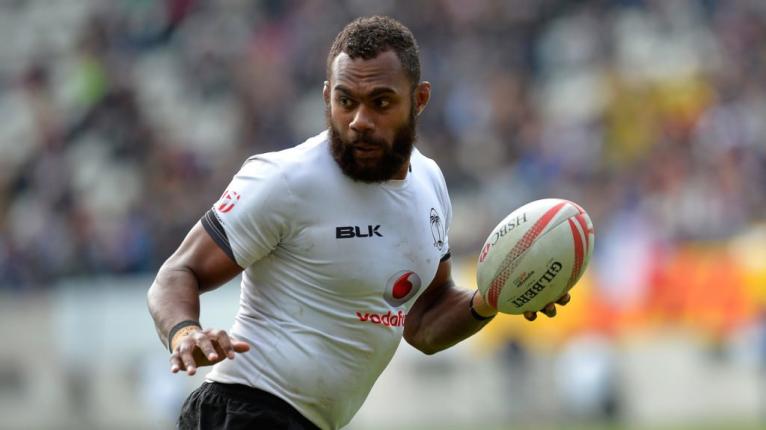
- Ben Smith, Highlanders and New Zealand (89)
Smith rarely put a foot wrong this season and just slips down these rankings a little bit due to the bumps in the road that both the All Blacks and the Highlanders have faced this year. He might not have impacted the game as much as some of the back three players yet to come in this list, but that shouldn’t detract from the fact he is still arguably the benchmark at full-back in world rugby.
- Aphiwe Dyantyi, Lions and South Africa (78)
The World Rugby Breakthrough Player of the Year, Dyantyi’s rise and story is a remarkably impressive one. Having basically gone from Currie Cup to Super Rugby to international rugby all in one year is a feat that very few achieve, and then to top that off with match-winning performances against England and New Zealand is extraordinary. The Boks have found themselves a potential star.
- Duane Vermeulen, Kubota Spears and South Africa (84)
It’s mark of how effective Vermeulen was against England in the summer and then on the European tour in November that he makes this list, despite missing The Rugby Championship. He has added a physicality to the Springbok back row that had seemed to be missing for much of the last two years and he has proven to be another valuable leader in what is a young South African side. Recent confirmation of return to South Africa for 2019 must be music to Rassie Erasmus’ ears.
- Rieko Ioane, Blues and New Zealand (85)
Ioane has had a very solid year, but the sophomore season is almost always the bigger challenge for an emerging player. After setting international rugby alight in 2017, it’s been a slightly quieter campaign for Ioane – partly due to the All Blacks facing a more testing year – but he is still well on track to be one of the key players for New Zealand at the 2019 RWC, despite still just being 21 years of age.
- Jacob Stockdale, Ulster and Ireland (85)
There are still some questions of Stockdale in defence, but the attacking x factor that he has brought to Ireland and Ulster significantly outweigh that and speak of a very bright future for the 22-year-old. His 12 tries in his 14 international caps – eight tries in 10 tests in 2018 – has him on track to well and truly smash all Irish rugby records and the complementary, yet contrasting styles of he and Jordan Larmour should be giving international defence coaches sleepless nights for years to come.
- Siya Kolisi, Stormers and South Africa (84)
A year Kolisi won’t forget in a hurry, with the back rower taking on the Springboks captaincy under the guidance of Erasmus and immediately delivering a series victory over England. Over the course of the year, there will be one or two games that Kolisi would like to have back, but for the most part, his performances have been excellent in the green and gold of South Africa and he has shown no signs of being adversely affected by the burden of captaincy.
- Ellis Jenkins, Cardiff Blues and Wales (78)
When a two-time British and Irish Lions captain like Sam Warburton retires, you’d expect there to be knock-on effect for the Blues and Wales, but the fact that Jenkins’ form has helped all but negate that is a mark of the impact he has had on the game this year. A dominant tackler and vice-like limpet on the ball, Jenkins has continued Wales’ truly outstanding recent run of producing top-level international flankers.
- Ardie Savea, Hurricanes and New Zealand (93)
Savea has flourished with Sam Cane unfortunately injured and the versatile back rower has been one of New Zealand’s most effective performers this year. He has looked stronger over the ball, more dominant as a carrier in the tighter areas of the pitch and has shown the conditioning to perform at that level for 80 minutes, throwing the door wide open as to where and how the All Blacks could use him in 2019.
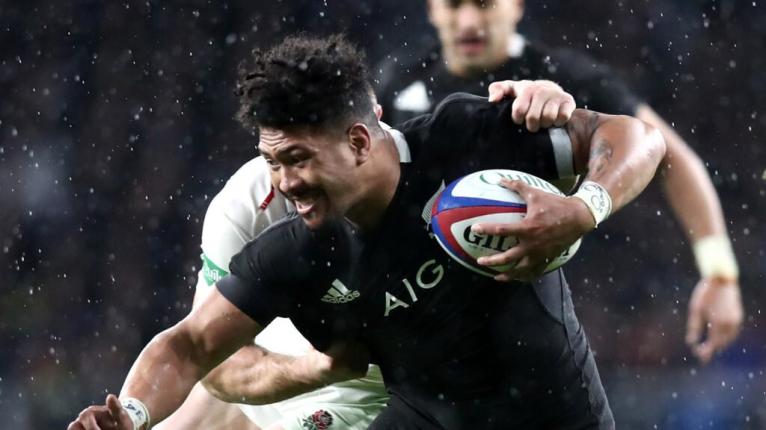
- Kurtley Beale, Waratahs and Australia (80)
The Australian seemed to re-invigorate himself at Wasps and has enjoyed a great renaissance in Super Rugby since returning to the Waratahs. He hasn’t been helped at international level by the Wallabies’ poor form, but he was impressive against Ireland in the summer and had a good Rugby Championship, despite being shifted between centre and fly-half.
- Maro Itoje, Saracens and England (92)
Itoje probably doesn’t quite get the plaudits he deserves at international level because of the spoiling role – and subsequent penalties – that England and Eddie Jones ask him to perform. When given slightly more freedom, his ability as a carrier shines through, and his athleticism to cause problems at defensive lineouts make him one of the first names on the England teamsheet.
- James Ryan, Leinster and Ireland (92)
The Irishman just beats out Itoje this year, in what should be a fascinating head-to-head battle for seasons to come. Ryan consistently gives Leinster and Ireland a source of front-foot ball from which to run on to and his work at the breakdown, defending the maul and providing quick and clean ball off the top of the lineout has looked even sharper this year, after impressing in 2017.
- Jack Goodhue, Crusaders and New Zealand (91)
If the centres are one area where the All Blacks are potentially vulnerable or in-flux at the moment, Goodhue’s breakout season has gone a long way to fixing that. After making his debut against France in the summer, Goodhue cemented himself into the New Zealand midfield over the course of The Rugby Championship, as well as being an integral member of the Crusaders side that were able to win back-to-back Super Rugby titles.
- Willie le Roux, Wasps and South Africa (70)
There is no doubt le Roux has flourished at Wasps and his creative approach, joining the back line and linking the midfield with the outside backs, has suited the club’s style of play perfectly. It helped him re-establish himself with the Springboks, where he has gone on to form a similarly devastating combination with Dyantyi, Sbu Nkosi and Cheslin Kolbe.
- Owen Farrell, Saracens and England (92)
Farrell’s case was not helped by England’s dire start to 2018, where they registered their worst Six Nations finish since the competition was expanded to include Italy, nor by the 2-1 series defeat in South Africa. A strong autumn and an excellent club season have helped the playmaker bounce back, however, as he has seen off the challenges of George Ford and Danny Cipriani to become England’s incumbent fly-half.
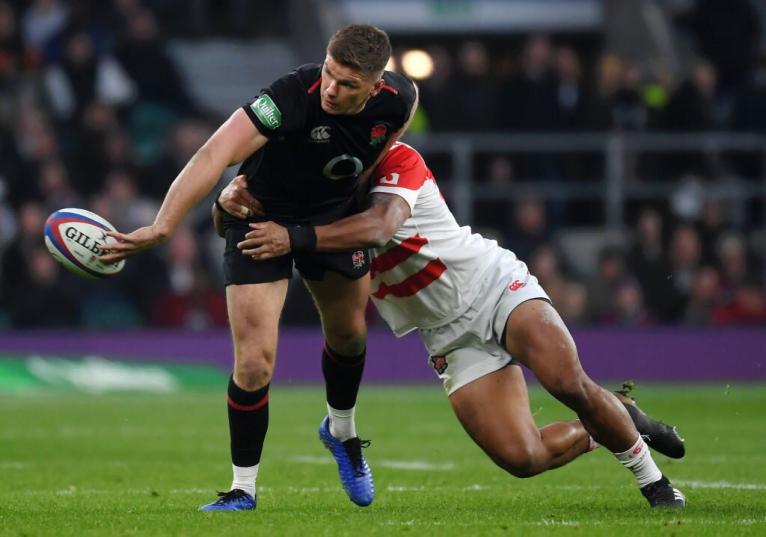
- Faf de Klerk, Sale Sharks and South Africa (79)
He may not be a traditional scrum-half, but that hasn’t stopped de Klerk from taking the position by storm in 2018. With Conor Murray having faced his injury issues and Aaron Smith not looking quite at his best, de Klerk has been the standard bearer for the position and his high-tempo style has been a big part of the Springboks’ resurgence over the last 12 months.
- Beauden Barrett, Hurricanes and New Zealand (92)
A down year for Barrett? It’s hard to look at it in any other light, given the levels he has played at over the last couple of years. On his day, he is still the hardest fly-half in world rugby to defend against, but his consistency perhaps hasn’t been quite as high this year as it has previously. With Richie Mo’unga breathing down his neck, expect Barrett to come flying out of the blocks in 2019 and erase any pessimism Kiwi fans might be feeling ahead of the RWC.
- Mako Vunipola, Saracens and England (90)
The conditioning and durability of Vunipola alone is enough for mention in this list, but when combined with his carrying and ball-handling ability, he rockets up to these lofty heights. One thing that doesn’t get mentioned enough in regard to Vunipola is the speed and efficiency he boasts in the defensive line, even late in the game, when most men his size are out on their feet.
- Peter O’Mahony, Munster and Ireland (92)
O’Mahony’s place here, among a number of players who certainly catch the eye offensively more so than the man from Cork, is a testament to his work rate and commitment that sees him win the tight battles on the pitch. His defensive work at the lineout arguably sets the bar in world rugby, where he is consistently able to steal or at least disrupt opposition ball. Combined with his work at the breakdown and as a dominant tackler, O’Mahony is a thorn in the side of any team he lines up against.
- Sam Whitelock, Crusaders and New Zealand (87)
With Brodie Retallick facing his fair share of time on the sidelines due to injury in 2018, the spotlight has fallen on Whitelock, whose ability is now even clearer to see for those who may have missed it in Retallick’s shadow. The lock went passed 100 caps for the All Blacks this year and was once again vital for the Crusaders in their successful defence of their Super Rugby title. He contributes massively at the set-piece and consistently executes his basic skills.
- Kieran Read, Crusaders and New Zealand (93)
After an injury-plagued 2017, Read has been back to his best in 2018, leading from the front as both the Crusaders and All Blacks have enjoyed productive seasons. His lineout work has been consistently excellent, whilst his ability to cause havoc in the wider channels and link up seamlessly with the backs has not faltered, despite the fact the number eight is now well into his 30’s.
- Malcolm Marx, Lions and South Africa (92)
A lot of people are guilty of over-focusing on those three errant lineouts against England and not giving enough weight to the fact the Lions had the most accurate lineout in Super Rugby this season. In addition to that honing of his throwing, Marx has not allowed his dominance as a ball-carrier in the loose to fade and there may not be another player as destructive with ball in hand as the Springbok hooker. Don’t underestimate his ability to scrummage and hook quick ball, either.
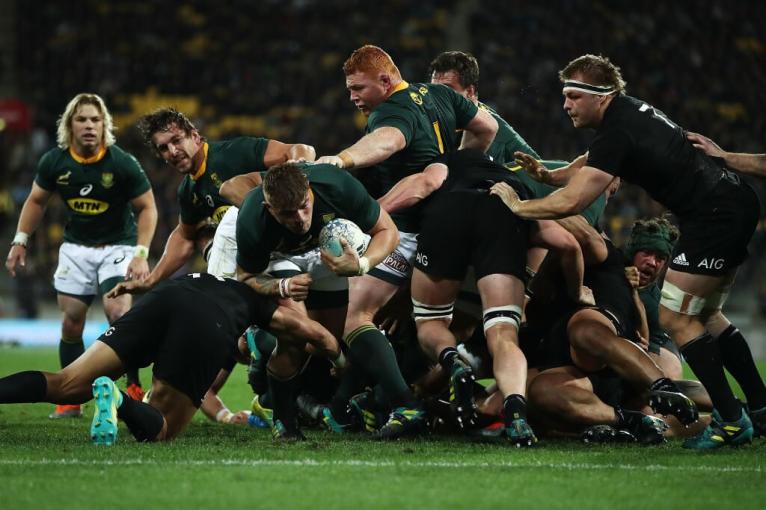
- Johnny Sexton, Leinster and Ireland (92)
What a year it has been for Sexton, who has thrown off a number of the injury issues that have plagued him in the last few years and delivered time and time again for Leinster and Ireland. His guile and technical excellence have seen him establish himself as the world’s most effective fly-half this year, despite strong competition from both Barrett and Farrell.
- Tadgh Furlong, Leinster and Ireland (91)
Potentially controversial, with Sexton having won the World Rugby Player of the Year award, but the chances of a prop being nominated for that award, letting alone winning it, seem astronomically high. Furlong has become a master of his craft and not only excels in the traditional roles of a tighthead, both as a scrummager and a lineout lifter, but also in the loose, where his carrying, breakdown work and solidity in the defensive line have all helped propel Leinster and Ireland to an unprecedented year of success.
Watch: Beyond 80 – Knocked
























